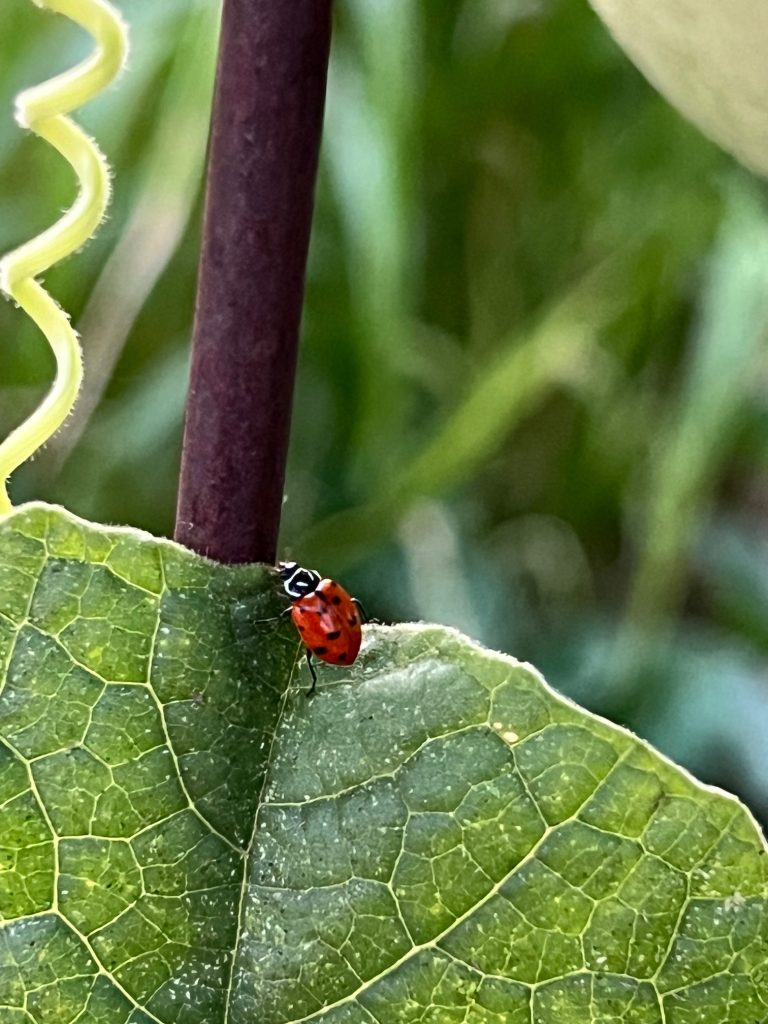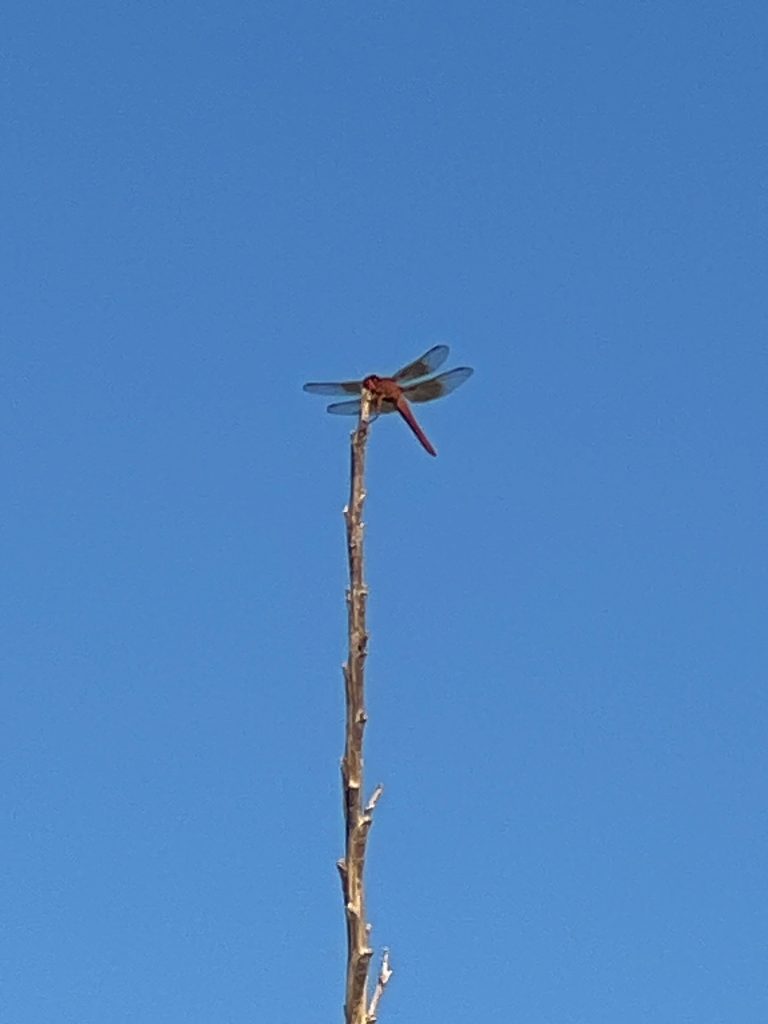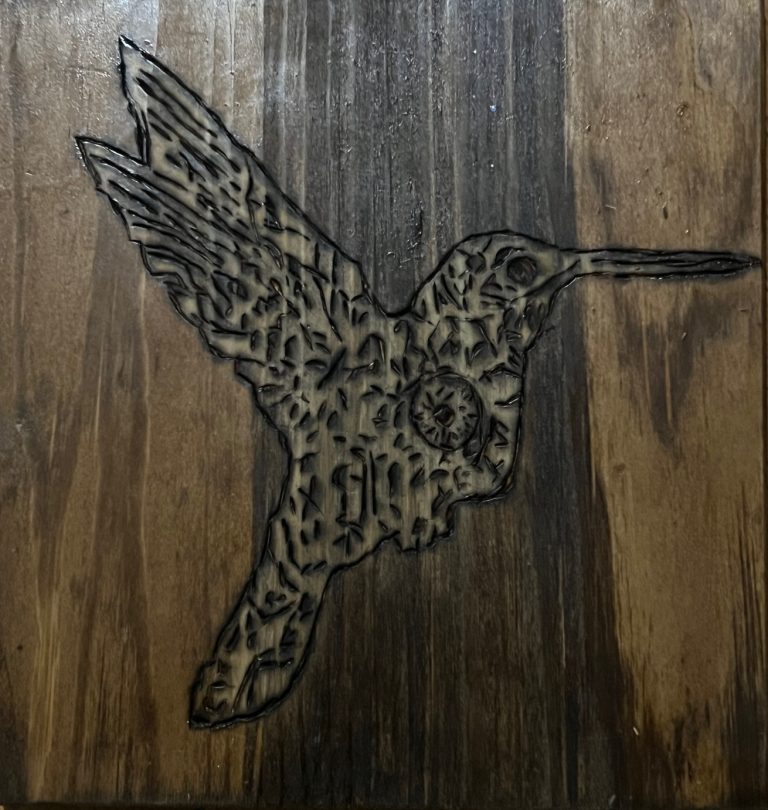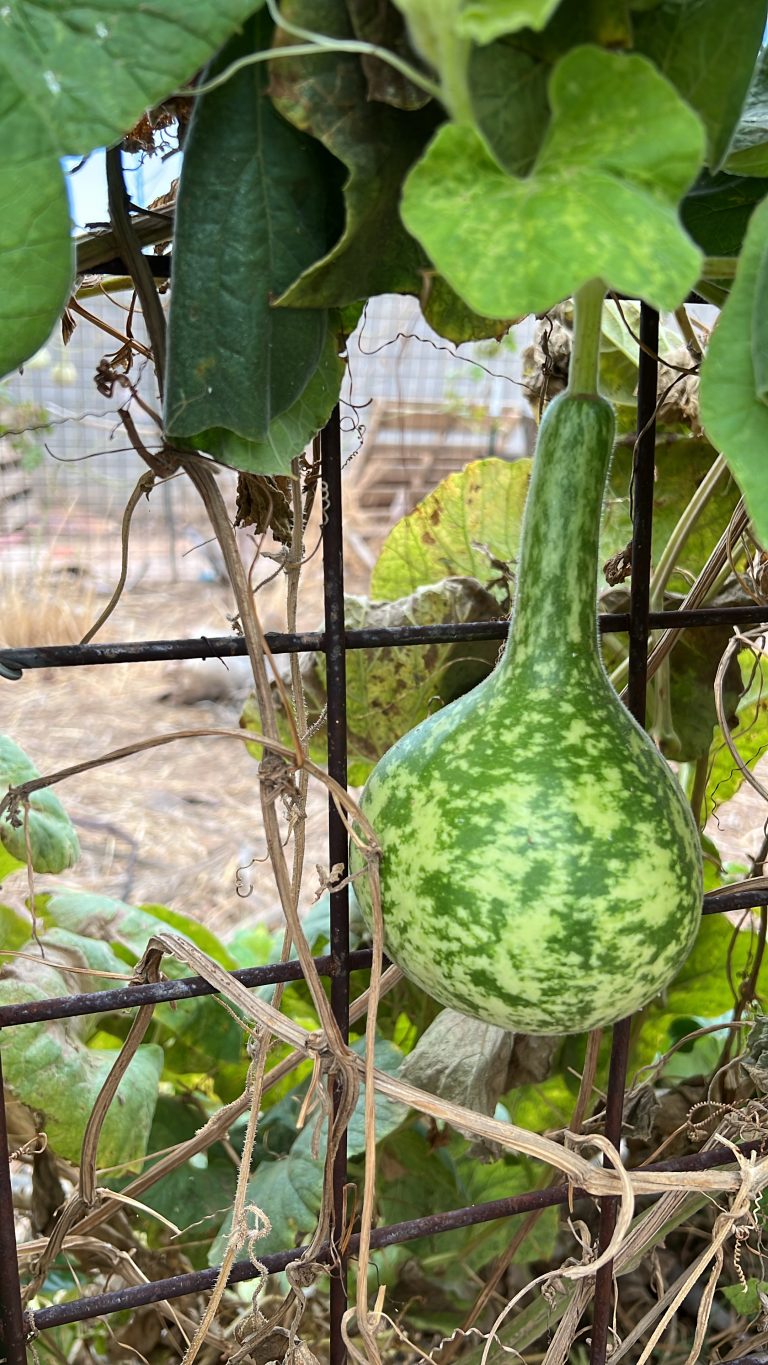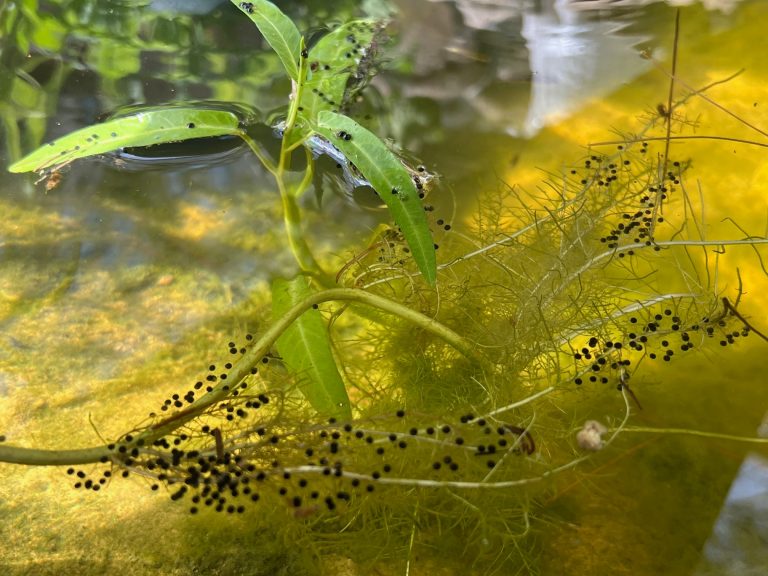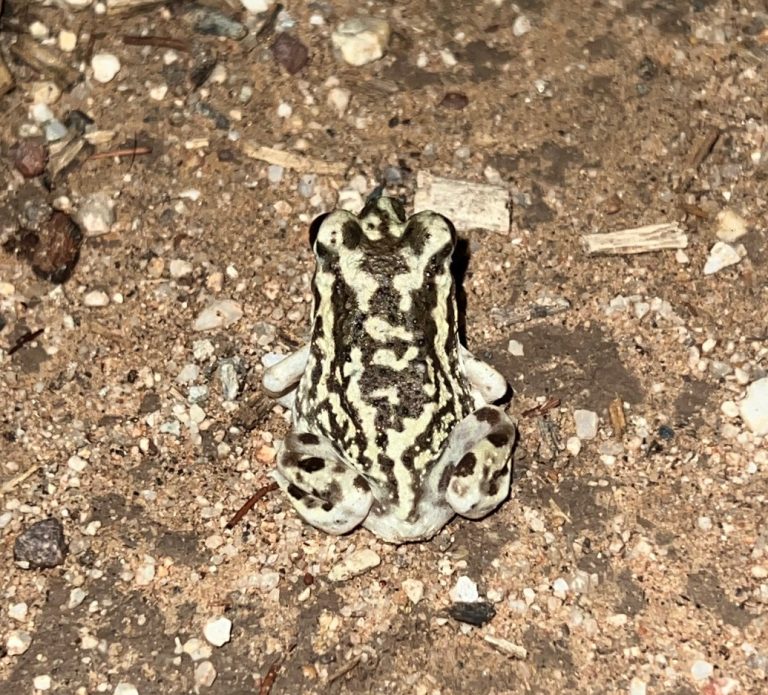November 7, 2023
I got a pile of mulch and mesquite logs dumped in my back yard a little while back. Last night, I finished spreading it around the yard fairly well. I’m trying to protect the soil, begin the process of building the soil, and also influence the movement of water if we get more rain. We got a good storm a week or two ago. The water runs south to north to the north end of my property and then flows out the gate and down the driveway into the street. I noticed during the last storm that the water that was running off of my property was the color of my soil, so I am loosing what little good topsoil I have to erosion every time it rains, and most of the water runs out of my yard and into the street. The distribution of mulch will reduce the impact of the raindrops on the soil, absorb some of the moisture and slow the flow of the water.
I also built a sort of dam out of mesquite logs and palm fronds. I just put down a bunch of mesquite logs in a single layer upstream where the water would normally be flowing out of the yard, and up from there I put all the rest of the palm fronds I had from when we had our trees trimmed to slow the water down before it reaches the wood.
The ugliest mesquite I had, which was mainly from the free mulch dump I mentioned earlier from a local landscaping company. They gave me mostly wood with parasitic growth on it, and the mulch was about 70% beautiful mesquite chips and grass, and 30% mistletoe branches. It is too varied in thickness to be used for biochar and it’s too ugly to be used for art so this is why I chose these pieces to use in the dam, as well as distributed around the yard in areas that get watered. I am trying to provide an environment for fungal growth on the logs and get them to start to be broken down, even just a little bit. I will then use these logs in a hugelkultur. I didn’t see any berries or anything but I may not want to plant a mesquite in the yard due to this, I’m not sure but it doesn’t sound like a great idea.
Otherwise, my wicking bed tomato plant has about 30 cherry tomatoes on it, plus a few small amaranth and some assorted greens that I can not distinguish from each other, honestly. We just planted a lot of different things like mixed lettuces, arugula, shisho, basil, some flowers, and I don’t even know what else at this point. I have an okra plant that is starting to produce pretty well, the beans continue to produce slowly, my sorghum used to be infested with aphids but they have disappeared as well as the tons of bees, wasps, grasshoppers, and other bugs that used to be in the garden. I don’t know where they all went. The only bugs that are left that I see are ants, and I have had to battle the maroon colored ants with borox because they were destroying my sorghum, which I am using to build a bed for growing gourds next spring. We also have two other tomato plants along the back wall, one of which has a ton of flowers. There are 3 chili plants, one of which has two chili growing and a lot of flowers. I am manually pollinating as well as using this hormone I bought at lowes.
There is also a vine that looks kinda like a cucumber or squash, watermelon or pumpkin but we are still not sure what it is. It has a lot of fruit on it, and we do remember planting pumpkins, possibly watermelons, and definitely cucumbers, however they don’t look like baby cucumbers. I can’t wait to find out what they are!
I also got a few buckets together to make a small worm bin. I have filled my compost pile wrapped in chicken wire, and plan to leave it for a significant amount of time to develop the fungal activity. I will not be turning it, just adding enough water to keep it from drying out. We are working on my wife’s garden area, which will include two wicking beds totaling 48 square feet of gardening space, plus an in ground bed which was already in decent shape when we bought the house in March.


